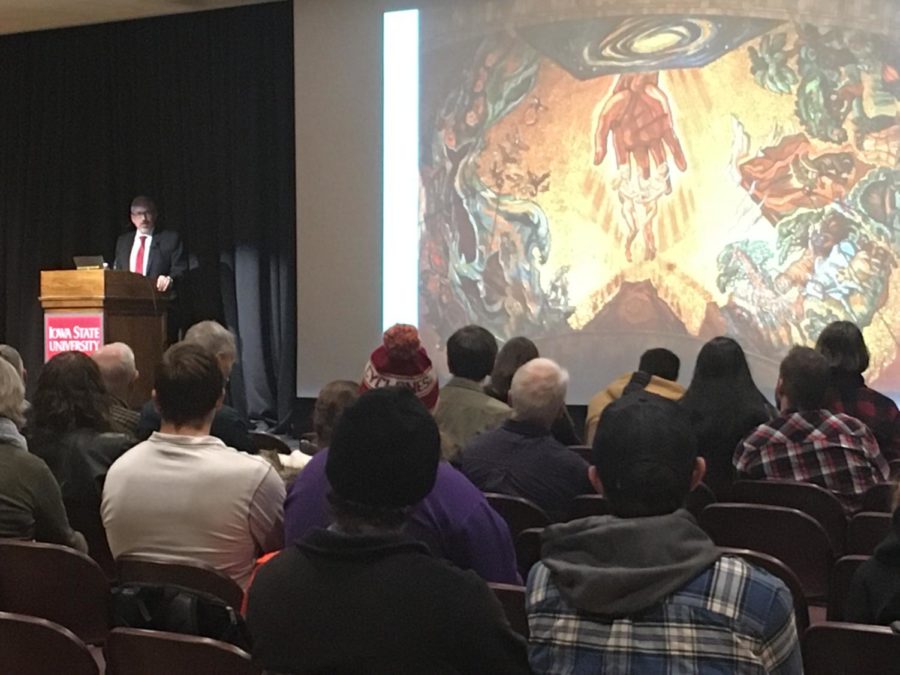Lecture discusses how faith and science don’t have to be opposing forces
Morrgan Zmolek/ Iowa State Daily
Aaron Dominguez, a particle physicist and provost and professor of physics at the Catholic University of America, discussed how being both a scientist and a Catholic coincide in his life during his lecture titled “Science, Technology and Faith.”
October 30, 2019
Science and faith can be two parts of one whole, said one physicist who presented a lecture Wednesday.
In the Sun Room of the Memorial Union, Aaron Dominguez, a particle physicist and provost and professor of physics at the Catholic University of America discussed how being both a scientist and a Catholic coincide in his life during his lecture titled “Science, Technology and Faith” and showcased that the two do not necessarily have to oppose each other.
Dominguez began his lecture talking about a few of his larger experiments, namely the Large Hadron Collider, the discovery of the Higgs Boson in 2012 and his overall research with fundamental building blocks of the universe.
The Large Hadron Collider is not only the largest device of its kind in existence, but also the largest machine in the world.
The purpose of the Large Hadron Collider, stationed at the CERN lab in Geneva, Switzerland, is to study the basic building blocks of matter by recreating certain conditions in which the particles would appear. It has also been used to simulate a similar environment to that of the “Big Bang.”
In his research, Dominguez said he aims to answer several questions. In addition to the questions surrounding the basic particles of the universe, Dominguez said he and his team look to answer how the universe works, how that may change over time and how the continued evolution of the universe could look in the future.
The particle was first theorized about in the 1960’s, which Dominguez said he had spent a major part of his life searching for, gives other particles, such as the protons and neutrons that help make up human atoms, mass.
But science alone, he said, does not give all the answers. He said it does not tell people how or why the inception of the universe happened.
Dominguez, a devout Catholic, said that is where his faith comes in.
“If you just stick to science, it doesn’t answer some of the most profound questions there are,” Dominguez said. “Science and faith are set opposed to each other, but they are two halves of a whole. They work in concert to help me understand my place in the world.”
Dominguez said science and faith have never been in conflict for him, and that he actually finds his research with physics to be completely compatible and possible with the teachings of the Roman Catholic Church, as he said he believes science cannot prove or disprove the idea of God; his faith has led him to becoming a more satisfied scientist.
“Faith and reason have to be integrated to do research the right way,” Dominguez said. “We have to keep them both at the center of what we’re doing.”
This merging of the ideas of both science and faith is displayed in artwork in the Basilica of the National Shrine of the Immaculate Conception, the cathedral located on the university’s campus and the largest Roman Catholic church in all of North America.
This piece of artwork shows the conception of the universe with elements of both science and religious teachings within it, proving to Dominguez, he said, that the two do indeed coincide.

















